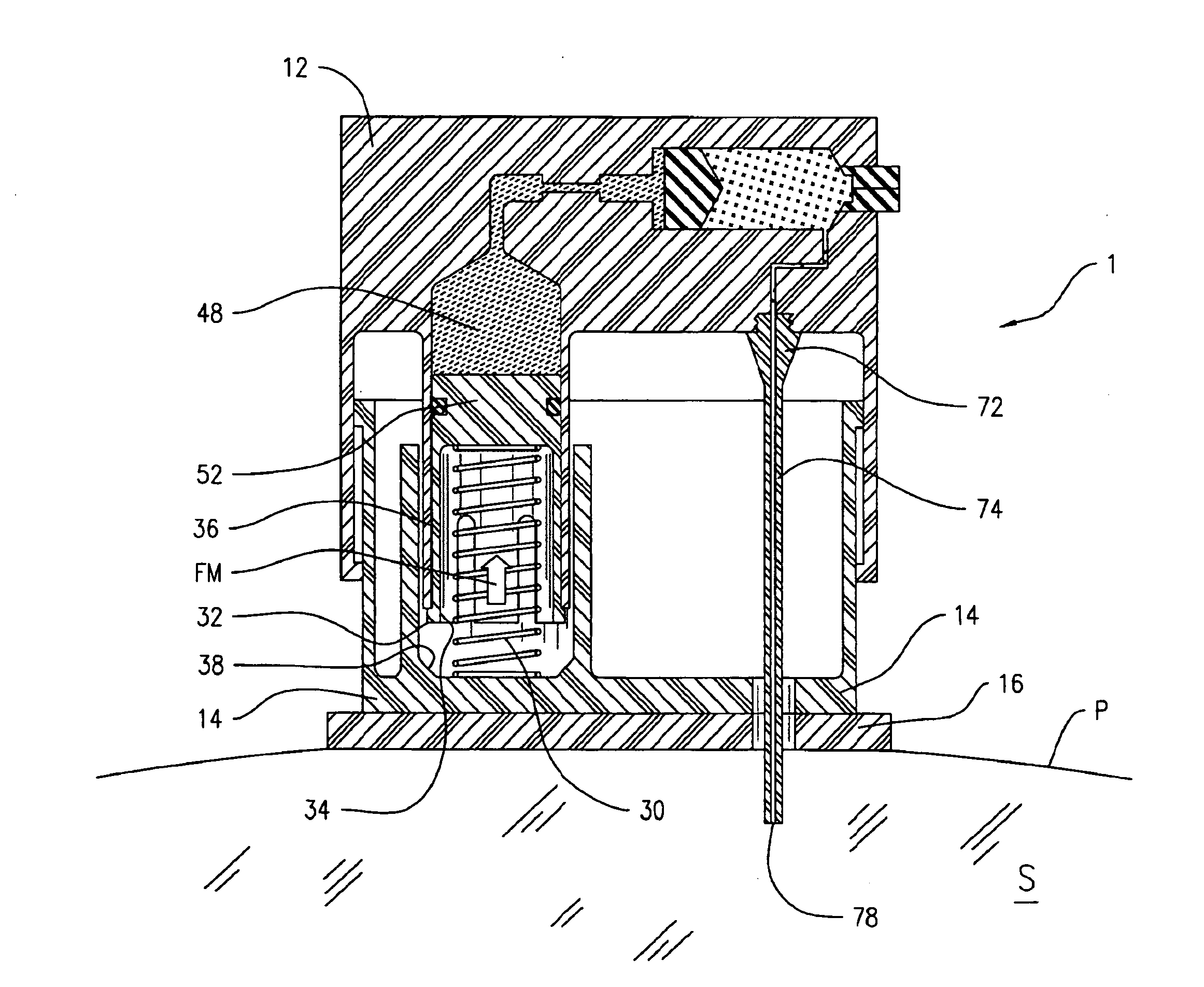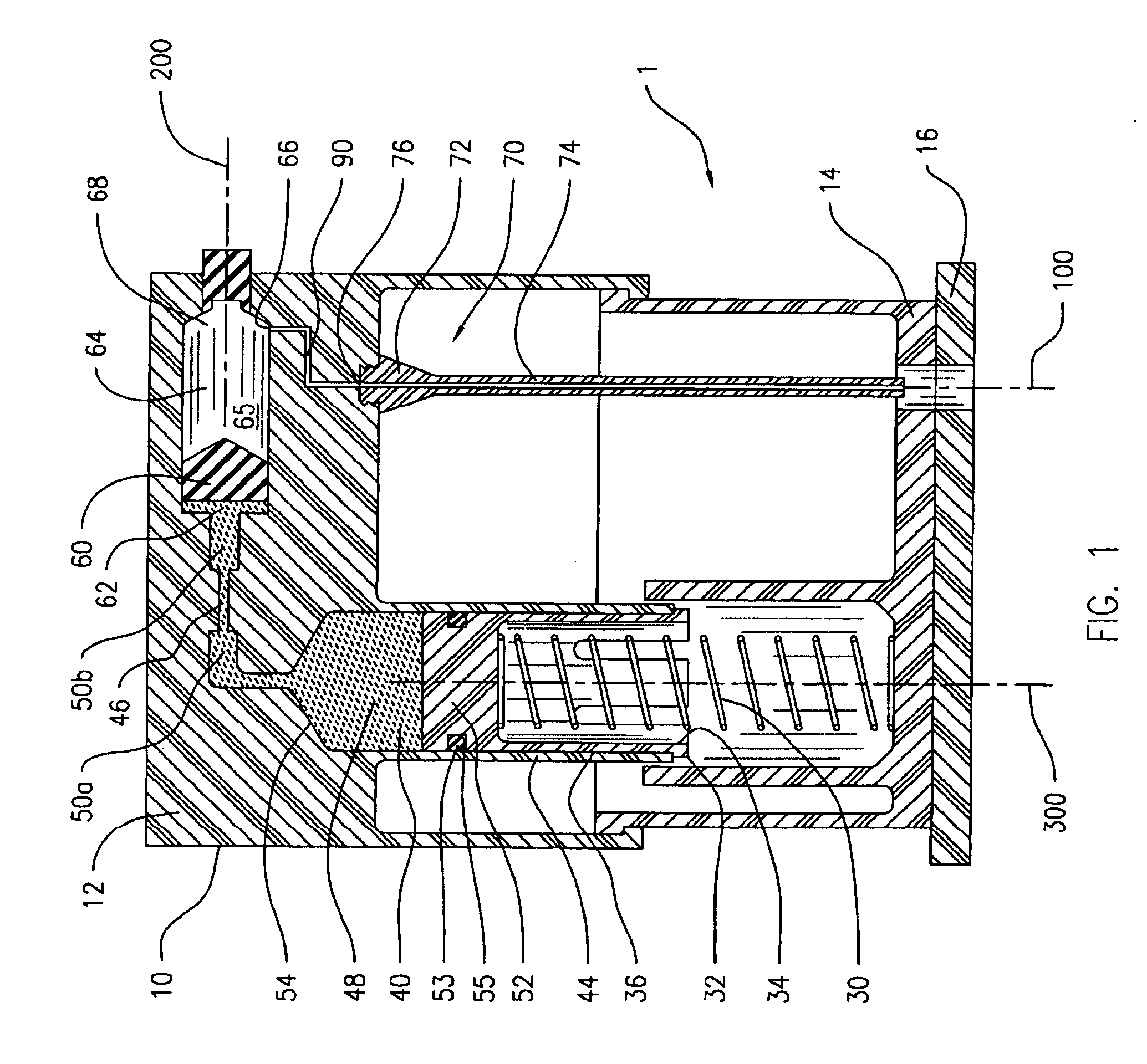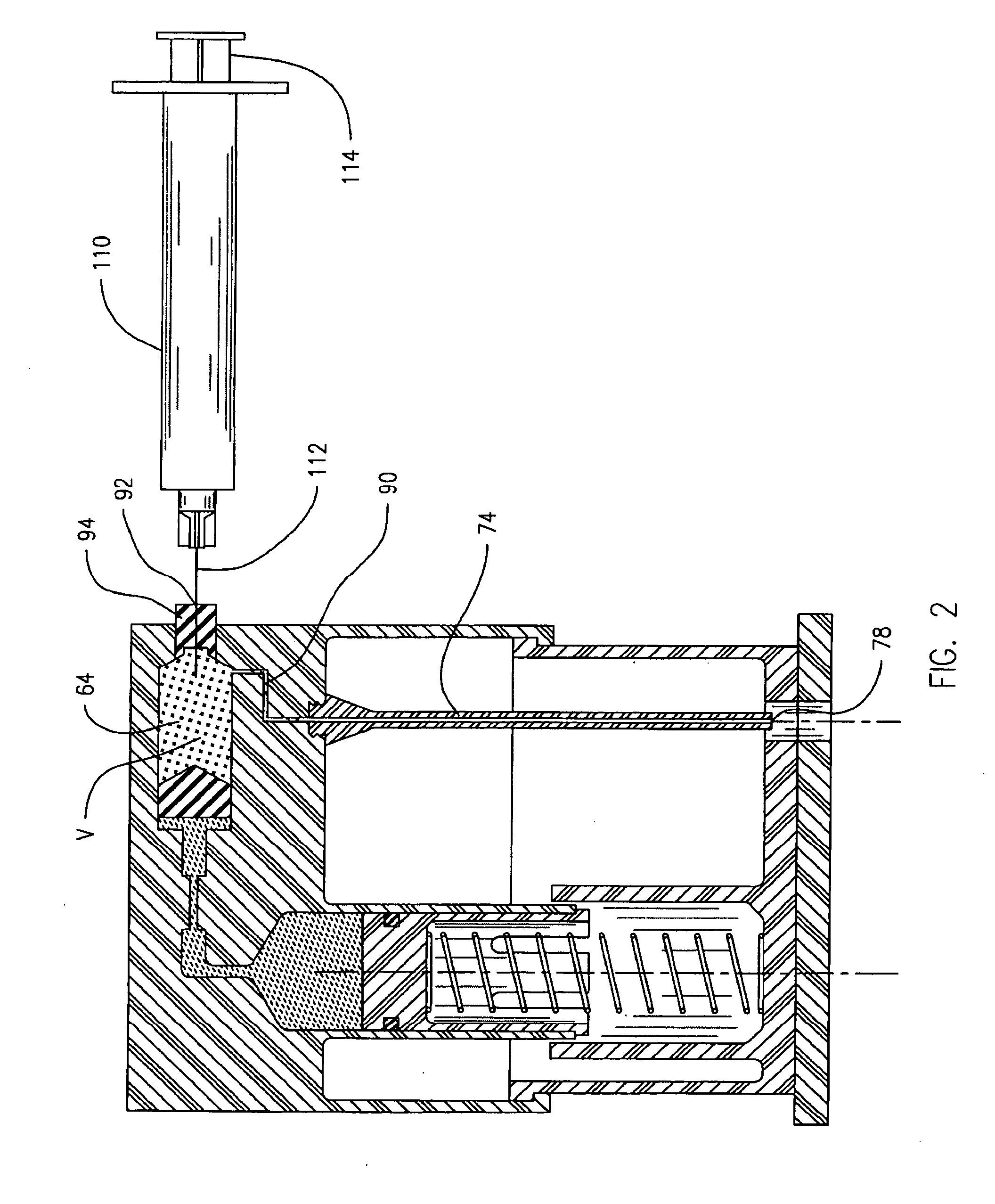Hands-free intramuscular injection device
a technology of intramuscular injection and hand-free, which is applied in the direction of intravenous devices, medical devices, medical devices, etc., can solve the problems of affecting the safety of patients, the pain of an injection is related to the size of the needle, and the injection can be very traumatic, etc., to achieve the effect of low flow rate, simple and inexpensive, and easy operation
- Summary
- Abstract
- Description
- Claims
- Application Information
AI Technical Summary
Benefits of technology
Problems solved by technology
Method used
Image
Examples
Embodiment Construction
Definitions
[0031]As used herein, “patient” means a person, including a child or infant, or an animal, typically a mammal, on which the device is used to inject a vaccine, or a person who uses the device on himself or herself.
[0032]As used herein, unless specified otherwise, the term “upward” means in a direction or oriented away from the patient's skin or the base of the device; the term “downward” means in a direction or oriented toward the patient's skin or the base of the device; the term “inward” means in a direction or oriented toward the centerline of the device; and the term “outward” means in a direction or oriented away from the centerline of the device.
[0033]As used herein, unless specified otherwise, the phrase “manually powered” means that the power provided for the device of the present invention to at least insert the injection needle into the patient's skin is provided manually by a medical technician (a nurse, doctor, or other person who can administer the injection)...
PUM
 Login to View More
Login to View More Abstract
Description
Claims
Application Information
 Login to View More
Login to View More - R&D
- Intellectual Property
- Life Sciences
- Materials
- Tech Scout
- Unparalleled Data Quality
- Higher Quality Content
- 60% Fewer Hallucinations
Browse by: Latest US Patents, China's latest patents, Technical Efficacy Thesaurus, Application Domain, Technology Topic, Popular Technical Reports.
© 2025 PatSnap. All rights reserved.Legal|Privacy policy|Modern Slavery Act Transparency Statement|Sitemap|About US| Contact US: help@patsnap.com



